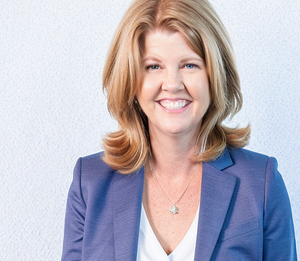The TCA framework (aka: the Stronger Together framework) started as a problem solving framework — and my thinking on it has evolved to it being an absolutely foundational part of strong team culture. This framework, and the tools that support it, make up the equity ecosystem in your business.
This video lesson outlines the 3 operating principles that are foundational to a strong team culture.
The Attachment:
Next Up:
I suggest watching this video next:

The Transcript:
The Stronger Together framework started as a problem solving framework. When I first started working with clients and my thinking on it has evolved to it being an absolutely foundational part of strong team culture. This framework, and the tools that support it, make up the equity ecosystem in your business. So let me set this up for you.
As I've been coaching clients through the years, they've often come to me with performance issues on their team for us to discuss and workshop together. And most of them are presented as accountability problems. For instance, not hitting deadlines or waiting till the last minute to start something and realizing that they don't have everything they need, which means the deadline can't be met or just otherwise not meeting expectations. And those are accountability problems,
but there are questions that I found I needed to ask first before I knew what the fix should be. And I began to notice that accountability is one of the last steps in a chain of steps that need to be in place for good work to get done. It's the third of three foundational elements that need to be in place for a team to grow and thrive.
And it can only do its job properly when the other two foundations are in place. And so the other two foundational elements are transparency and agreement. And oftentimes the fix for the problem that shows up as an accountability issue is found by changing up your practices in one of the first two elements. So let me go through them. So I call them operating principles or values.
They aren't trying to take the place of the company values that you've developed that make your business stand out in a sea of competitors, but they're still values. And they're just as critical. So the first is transparency, make expectations and constraints explicit. There is many a time when a project is kicked off or a task is initiated and there is little to no guidance given to the person trying to complete it.
And this isn't always thoughtlessness or being devious. Sometimes it's sheer press of business. Sometimes it's assumed that the other person already knows. And sometimes there isn't a clear idea to articulate there's this. I know it when I see it thing going on, and that's a hold over from our solo days when that's exactly how we operated. We followed our noses, we did a little work,
and then we stepped back to look at it and then lean back in to do a little bit more work, but that isn't a way to allow a team to step in and help. So if there are expectations, especially unspoken ones, they need to be spoken. All the constraints need to be made obvious. And if you're in the position where you don't really know what done looks like yet,
there is a way to manage that process upfront. And I cover that in the tool section, but let's stick with transparency. What does it look like? Well, it could be kicking off projects with a template that asks you the decision maker to consider and describe and finalize the specs that you are Looking. It can also mean creating quick templates for other parts of your business zeroing in on those places where you're consistently disappointed,
where you're frequently dealing with work. That's not to spec or requires a lot of back and forth and creating a template that really nails down what you're looking for. Let me give an example here. A client's customer service team was forwarding emails with a sentence. What would you like to do here at the top? Leaving it up to her, to read through the entire email itself.
She would almost near, nearly always need to ask questions for context about the situation or about the customer. It just required a lot of back and forth, and we solved it by creating a short template, which looks a little different depending on that customer service issue, but it asks for some basic info about the situation and the customer all in one fell swoop.
So now when something gets forwarded to her, she knows that she's going to be equipped with a certain basic amount of information so that she's able to quickly make a decision with minimal back and forth. Another example, a client would receive work from her team through email. That was pretty good work, but it had some formatting issues, maybe some typos, and it hadn't been coordinated with some other team members.
And so that would leave the boss, my client to do all of that. And she was always doing the extra work of correcting those things and running things to ground. So it's a simple fix, right? She created a checklist of five things to check before you turn in a brief to me. And in that email to her, the person had to say,
I've completed the five, five step checklist. Here's the, here's the brief so that they were really on the hook not to bypass it or forget. So that was literally solved with one template. One last example, I had a very lovely client who was disappointed in a new hires performance. This new hire was just not showing up with work done on time.
Now this work wasn't tasked and dated by my client because th this, this was a project that the new hire was fully handling herself. So the expectation was that the new hire would pace her own work, but also adhere to the milestone rhythm that the company wanted. Well, were these milestones communicated to her or written down? They weren't because she was supposed to be a professional.
She's done this kind of work before, and she should know, well, she did not know about this silent yardstick. And once she was told she was happy to comply and that issue was solved. So the golden rule is if you're using it to evaluate the project success or the performance, you need to speak it. Now, if this is an area of growth for you that you really want to work on.
And every single team I've worked with has wanted to step up their game here. So you can listen to the tools, section the next video for how to zero in, in this area and what to use. So the second operating principle is agreement. It's the second layer. And I actually love the term informed consent. Making sure everything you task out is agreed to and building that moment of informed consent into the way your team works,
versus just assuming it because you haven't heard any differently. You know, a lot of times in software allows us to do this unconsciously. We just task somebody, we put their name and some random date on the thing next Tuesday. And we assume, we assume that unless we hear differently that person's going to come back on Tuesday with the work done. That's not always the case.
So one of my clients had a problem in that. What they're one of the team members would only look at tasks on the day the task was due and then would realize that they had questions or they didn't have all the resources. And that meant that the tasks couldn't get completed on time. So it came to me as an accountability issue, right? Tasks aren't getting done on time,
despite being tasked well in advance. So we tackled it two different ways. First of all, we set up a template for this task so that it was easy to include all the info that the task needed before that sometimes in the press of business, one detail or another would get accidentally dropped, but that's the transparency foundation. And we also instituted an SOP where each morning,
the teammate, the person who was assigned the task had a specific time in her schedule to read over newly assigned tasks and to give them a thumbs up in the software or ask a question. So the thumbs up meant, yes, I've read it. I get it. I believe I have everything I need. And I agree that this can get done by the date indicated that's what one simple thumbs up meant.
And anything other than that, she would start a conversation in the task to get that, to get that handled. So that's the agreement pillar. We were explicitly asking her agreements that of blindly issuing tasks to her that she may or may not understand. And we engineered a half hour of her day, every day for her to have the time to review them.
And it almost, it almost never took that long. This allowed her to see if she had everything she needed to complete and to explicitly agree that she could get it done by Tuesday, given all her other tasks and priorities. It allowed her to have a say in a safe way, because it's an explicit SOP to renegotiate a due date if she needed to.
And her explicit consent meant that she was more emotionally invested in doing what she said she was going to do on time. So with these two improvements, now we can truly see if we have an accountability issue or not because we eliminated the upstream problems. So this principle works on big things and small things, big things like quarterly rocks or priorities, monthly objectives,
big project deadlines, and on little things like individual tasks that need to get done. So yes, the business has objectives that it wants to meet, but you have a much easier time securing them. If you get buy-in from the folks who will be doing the work, yes, this takes a little bit longer, especially when you first Institute it, but it will very quickly pay dividends for you in the work being done on time and on spec.
Now we get to accountability. The third layered on top of the two other foundations. So accountability is simple. Do what you say you're to do. If something is preventing you from doing so speak up as soon as you know about it and participate in the discussion about how to remedy that. And by the way, accountability, the accountability works both ways when you,
the boss get in the habit of kicking off a project by delineating the priorities and the specs and the constraints and those specs change. You change your mind about something. Then you need to articulate the changes and the change request and go back through the agreement phase. No fair changing the goalposts without getting folks back on board. So those are the three foundations and I have tools and best practices to support each of these principles.






Member discussion